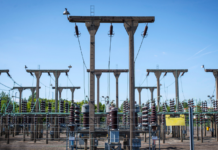The Bank of Punjab turned in another strong quarter, extending a two‑year run of outsized earnings as the provincial lender’s long push into low‑cost deposits, rural markets and digital origination starts to compound. Third‑quarter results show income advancing sharply and profits rising on the back of wider spreads and a better‑priced deposit base. Management says the repricing of legacy time deposits and a deliberate tilt towards current accounts should carry further gains into the year‑end.
The bank’s quarterly and nine‑month scorecards were the centrepiece of two post‑results briefings with analysts in November, which also laid out milestones in branch expansion, agricultural lending and an historic turn to dividends.
For 3QCY25, BOP posted profit after tax of about Rs5.1 billion, up 42% year‑on‑year. Earnings per share for the quarter printed around Rs1.6, up from Rs1.1 a year earlier, while 9MCY25 EPS rose to roughly Rs3.7 versus Rs2.6 last year, reflecting sustained operating leverage. Net interest income was up 61% year‑on‑year in the quarter, with total income up 42%; operating expenses rose 19%, far slower than income, helping lift profit before tax by 58% in Q3 and 81% for the nine months.
Arif Habib Ltd’s takeaways from the analyst call add more colour on deposits and funding costs. Deposits stood at about Rs1.8 trillion in September, with a seasonal quarter‑on‑quarter dip offset by healthier averages: current‑account balances increased 13.3% over six months and non‑MDR balances rose 10.5%, together adding an estimated Rs7.7 billion to revenue. Crucially, about 85% of high‑cost term deposits, roughly Rs427 billion of an estimated Rs500 billion, matured by late Q3. As these repriced, the weighted‑average cost of term deposits fell from 16.4% to 9.7%, with the full earnings effect expected to flow through Q4. Management’s current‑account share target for next year is 27% – another lever to sustain net interest margins even as the rate cycle stabilises. The content in this publication is expensive to produce. But unlike other journalistic outfits, business publications have to cover the very organizations that directly give them advertisements. Hence, this large source of revenue, which is the lifeblood of other media houses, is severely compromised on account of Profit’s no-compromise policy when it comes to our reporting. No wonder, Profit has lost multiple ad deals, worth tens of millions of rupees, due to stories that held big businesses to account. Hence, for our work to continue unfettered, it must be supported by discerning readers who know the value of quality business journalism, not just for the economy but for the society as a whole.To read the full article, subscribe and support independent business journalism in Pakistan
























